NYC’s Forgotten ‘War on Christmas Trees’
Discover how an obscure holiday crackdown affects festive street vendors today!


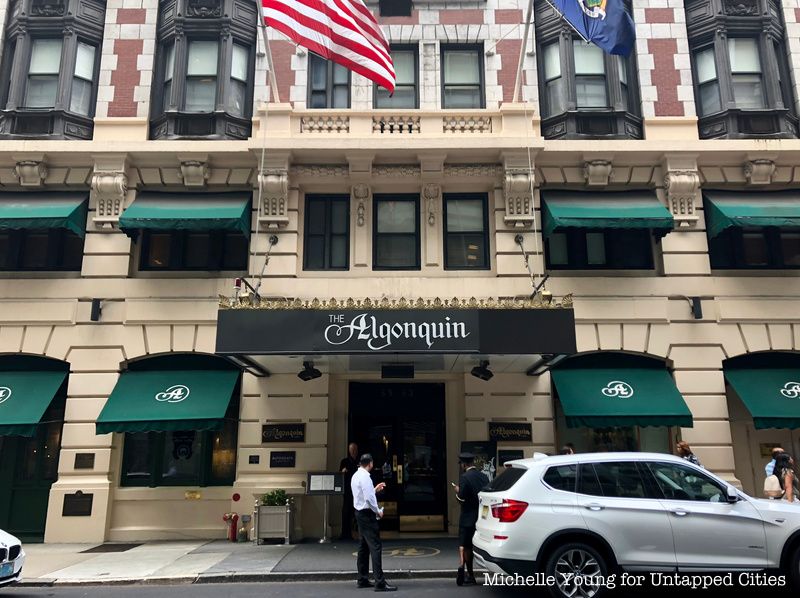
Located at 59 W. 44th Street in New York City’s Theater District in Midtown Manhattan, the Algonquin Hotel has stood for almost 115 years as the oldest hotel in the city and the gathering place for many of the city’s celebrities, from writers to actors. Despite changing hands a few times in the last few decades, the hotel still maintains its literary and celebrity reputation, appearing also in many movies. So, with over 100 years of history, we figured the historic hotel would have some interesting secrets. Here are the top 10 secrets of the Algonquin Hotel.
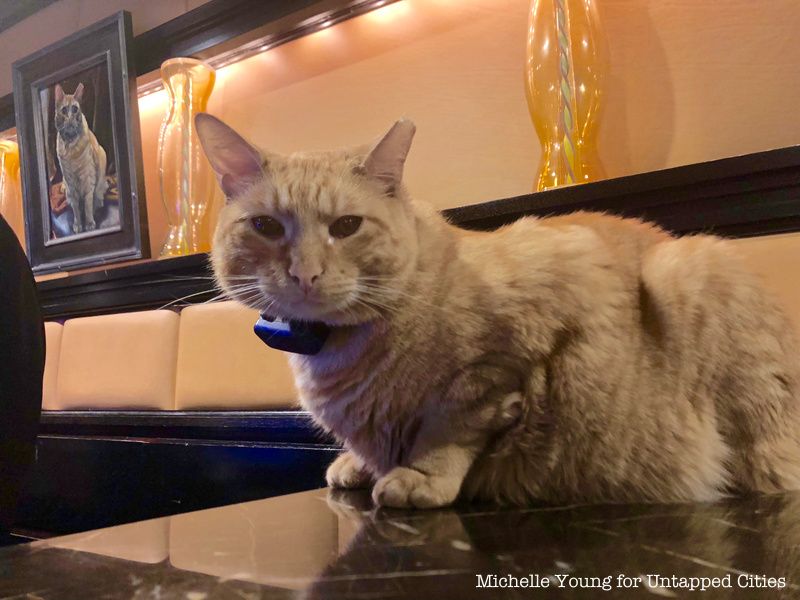
The current Algonquin cat in residence, the eighth Hamlet.
The Algonquin’s tradition of having a resident cat in the hotel began in the 1930s when Frank Case took in a “raggly-taggly,” abandoned, stray cat that wandered off the street into the hotel one day. The cat was originally named Rusty by Case, but actor John Barrymore, a frequent guest of the hotel, decided the cat needed a more theatrical name, changing it to Hamlet. According to NPR, Rusty drank his milk out of a champagne glass, talk about a fancy cat.
With the renaming of Rusty began an new hotel tradition in which each male cat would be named Hamlet, and female cat Matilda. Since, Rusty-turned-Hamlet, the hotel has been home to a three Matildas and eight Hamlets. Today, the role of Algonquin cat is fulfilled by the eighth Hamlet. Should you wish to contact the cat but do not have the time to visit in person, he can be reached via email, or you can even find him on Facebook, Twitter, and of course, Instagram.
Want to know more about Matilda? Check out our interview with Matilda, the Algonquin Cat.

The third, most recent Matilda on the front desk at the Algonquin Hotel.
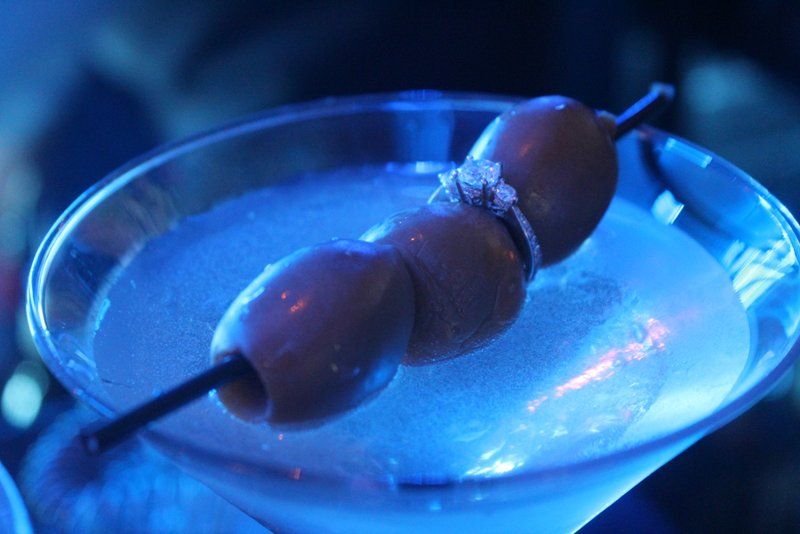 Photo courtesy Algonquin Hotel
Photo courtesy Algonquin Hotel
The Algonquin hotel’s Blue Bar has been serving what it calls a ‘Martini on the Rock‘ since its $3 million renovation in 2005, a martini of the customer’s choice with with a diamond, its single ‘rock,’ placed at the bottom. The drink costs $10,000.
Ordering the ‘$10,000 Martini’ is coincidentally not as easy as walking up to the bar. In fact, reservations for the drink must be made at least 72 hours in advance and requires a meeting with the hotel’s in-house jeweler to discuss the diamond in question’s size and clarity.
The drink has been served since 2005 and was proposed by hotelier Anthony Melchiorri, who told The Boston Globe that the martini was meant to increase coverage of the hotel’s re-opening after being closed for 29 days while its renovations were underway. The first order of the $10,000 martini was for a wedding proposal.
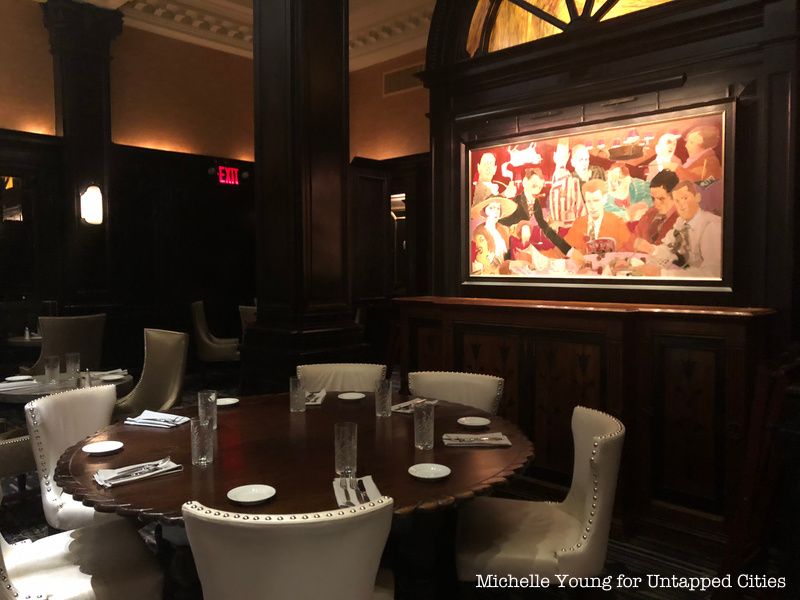
Perhaps the most famous piece of history about the Algonquin Hotel is The Round Table. In 1919, a group of 30 writers, editors, publicists and actors who met for lunch for a roast on New York Times critic Alexander Woollcott. Apparently, the group of friends had so much fun, they decided to meet at the hotel for lunch on a daily basis for about eight years. Some of the core members included Dorothy Parker, George S. Kaufman, Robert Benchley and Alexander Woollcott. This original group came to be known as “The Poison Squad” by fellow member Edna Ferber or more popularly as the “Vicious Circle.”
As vicious critics of each other’s work and of the goings on around the country, in 1925, the group had become so famous that it was no longer just a private meeting of friends. Instead, it became the source of much interest and entertainment by the public who wanted to know everything they were saying. Like most friend groups, time and interest saw “The Poison Squad” slowly dissipate as the country sank into the Great Depression, and many of the members even moved away from New York to further their careers elsewhere.
The hotel itself as played host to many writers, editors, actors, and other industry types for 100 years, but it was the original Round Table that catapulted the hotel to fame and made it a literary landmark.
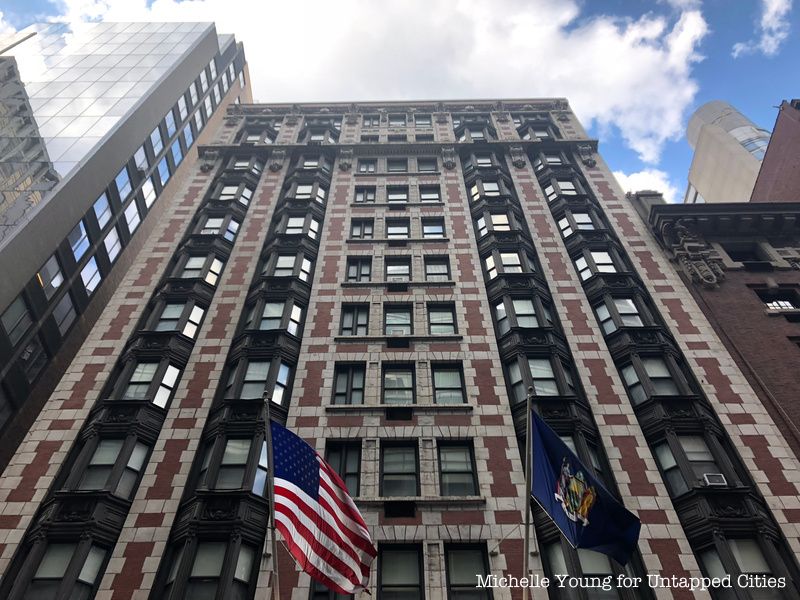
After establishing itself as a gathering place for writers in the Roaring ’20s, the Algonquin continued to be a meeting place and home to many writers and artists, boasting famous guests such as JD Salinger, Douglas Fairbanks, Mary Pickford, and Tallulah Bankhead. Many who came even penned some of their work in the hotel rooms.
On March 25, 1936, members of the New York Drama Critics Circle sat in one of the Algonquin’s rooms, intensely deliberating for three hours to choose a winner for the New York Drama Critics Circle Awards. The award was presented to Maxwell Anderson’s play “Winterset” one week later at a reception held at the hotel.
In 1956, when Alan Jay Lerner and Frederick Loewe were composing the music for My Fair Lady, music flowed out of suite 908 for days. They even worked 24 hours straight to write “I Could Have Danced All Night,” which prompted a threat by Ben Bodne, owner at the time, to remove the piano from the room if they didn’t quite down.
1950, William Faulkner wrote his Nobel Peace Prize speech in his suite. Faulkner received the Nobel Peace Prize in Literature in 1949 “for his powerful and artistically unique contribution to the modern American novel.” The speech he wrote at the hotel can be read here.
Maya Angelou stayed at the Algonquin whenever she came to New York for an appearance, and although she may not have written something in the hotel rooms themselves, she did write the screenplay adapted from her memoir I know Why the Caged Bird Sings on Algonquin Stationary.
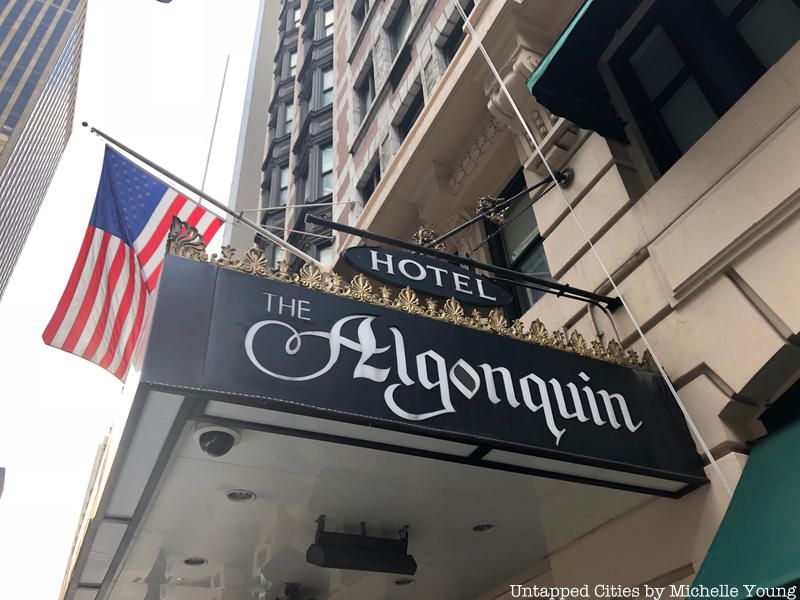
Originally, the 1902 hotel owner named it The Puritan, but once Frank Case took over five years later in 1907, he quickly renamed the hotel to The Algonquin. Clearly, the name refers to the Native American tribe whose territory extended down through parts of New York. Case renamed it after the tribe when he learned that the first residents of the area were belonged to the Algonquins. The tribe presumably moved westward after colonial pressure and expansion.
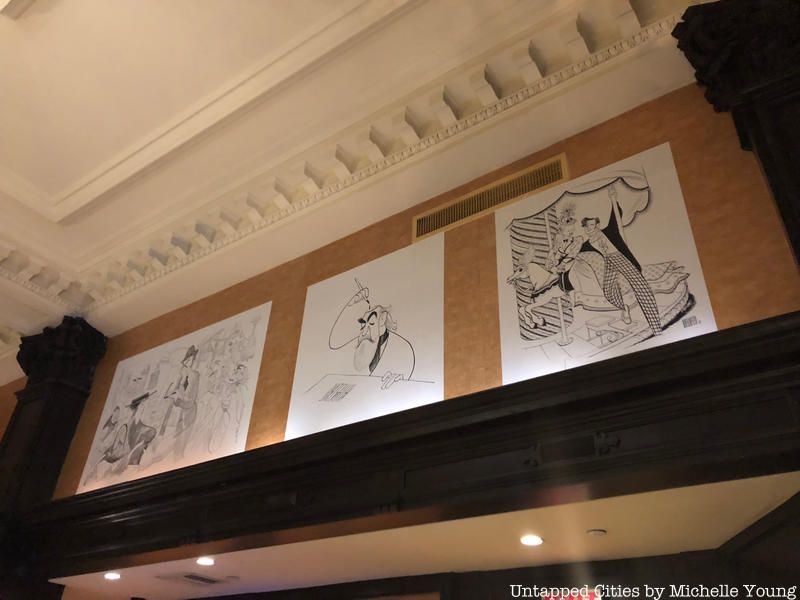
When the Round Table started meeting more regularly, owner Frank Case would gladly facilitate the meetings, giving them food, and even their own waiter. In a poker game against other members of the Round Table, Harold Ross won a handsome amount of money, which he used to found The New Yorker. On February 21, 1925, the first issue ran. Friends of Ross’ and fellow Round Tablers Dorothy Parker, Ralph Barton, Alexander Woollcott, Ring Lardner, and Robert Benchley were some of the first contributors to the magazine.
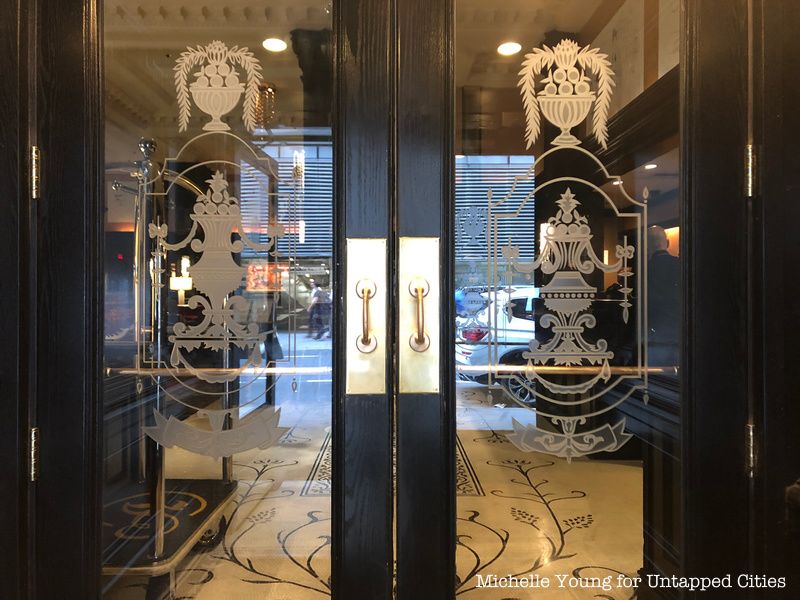
The Oak Room opened in 1939 as a cabaret supper club, but closed early on because of World War II. It wasn’t until 1981 that the venue reopened, ushering in a new era of the hotel. One of the three most famous supper cabaret clubs in the city, the club held performances by many distinguished artists, including Steve Ross, Andrea Marcovicci, Barbara Carroll, KT Sullivan, Julie Wilson with pianist William Roy, Mary Cleere Haran, Karen Akers. It also launched the careers of Michael Feinstein and Harry Connick Jr.
The Oak Room became an institution of sorts, a place the New York Times said one could “watch performers develop and mature.” But in 2012, after a 9-month, $5 million renovation, the Oak Room closed after 32 years and became a lounge for loyal guests part of a rewards program.
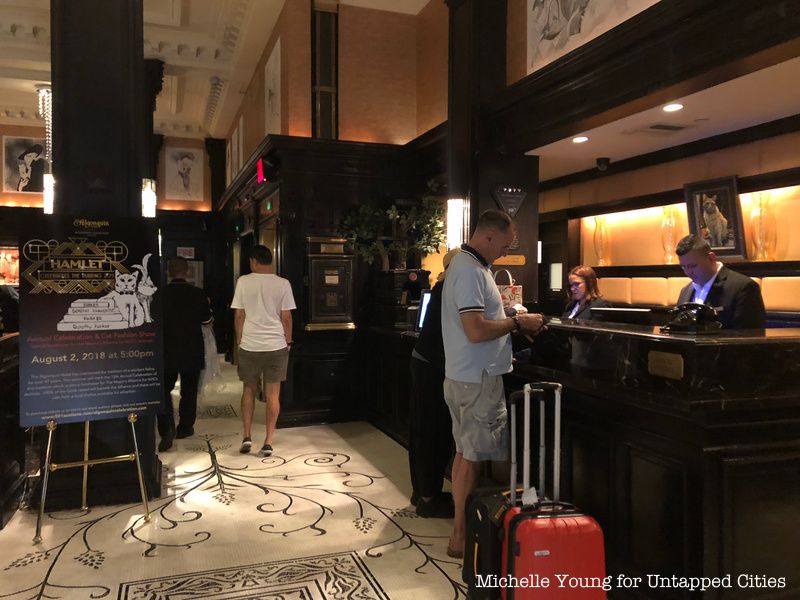
The price of staying in the hotel has increased significantly from its original $2 a night for a single in 1902 to upwards of $400 for a standard room today. But, if you happen to be an author on tour, you get a free night in exchange for an autographed copy of the new book. Former owner Frank Case used to send over plates of popovers, celery, and olives for the struggling writers at the Round Table. In continuing with the tradition, today, The Algonquin offer lunch discounts for struggling writers.

Frank Case took over the lease of the hotel in 1907, and purchased it and the land it stands on in 1927 for $1 million. The hotel remained under his ownership until his death in 1946. Shortly after Case’s death, Ben Bodne purchased the hotel in 1946, fulfilling the promise he made to his wife on their honeymoon at The Algonquin in 1924, that one day he would buy it for her.
Ben Bodne was the president and owner of the hotel until 1987 when a subsidiary of the Aoki Corporation of Tokyo purchased the hotel for $29 million. Before Bodne purchased the hotel, it wasn’t just his wife that was a fan of the place, but he was quite smitten as well. So when he did acquire it, according to the New York Times, the hotel maintained its reputation as a popular gathering place for celebrities, but quietly modernized it as the years went by.
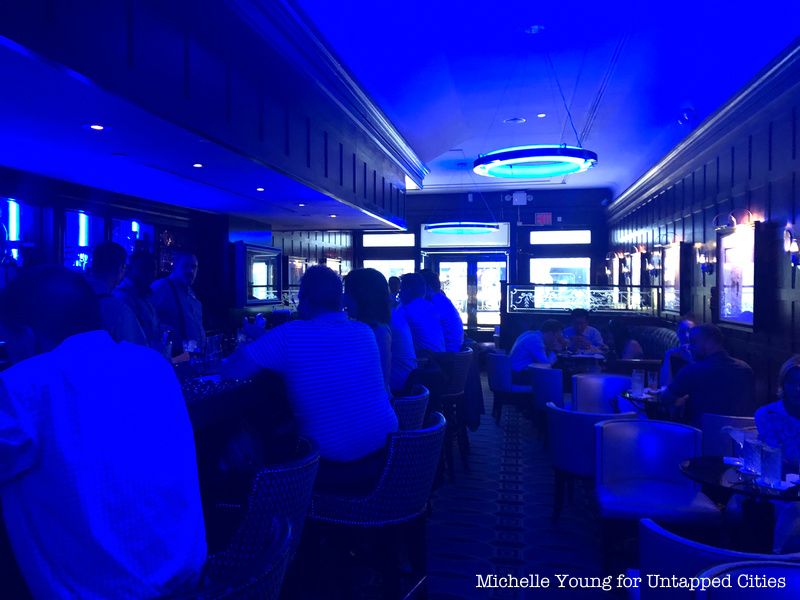
New York’s oldest bartender, with 58 years of experience. 30 of those were spent at the Algonquin Hotel where he worked from 1979 to 2009 when he retired at the ripe old age of 93. Wong, or Mr. Hoy has served drinks to all the famous celebrities from Marilyn Monroe, Judy Garland, to the Duke of Windsor.
Born in Hong Kong, Wong served in the US Air Force from 1943 to 1946, stationed in China and India. Afterwards, he moved to New York City and got a job as a bartender at a small, Chinese restaurant in 1948. After finding a home at the Algonquin, he hasn’t seemed to miss a day of work. In 2006, on the celebration of Wong’s 90th birthday, the general manager Bill Liles explained that Wong “never misses a day. If the weather’s bad he shows up early.” Now that’s commitment.
He can still recall the drink orders of the some of the most famous celebrities. He explained to the Washington Post that Marilyn Monroe came in on Wednesdays for lunch and ordered a Beefeater Martini, very dry, and Judy Garland sat in a corner drinking Johnnie Walker Red. His proudest moment though was making a drink for the Duke of Windsor in 1961. He asked for a House of Lords Martini in and out on toast. Wong knew exactly what it was (martini with a lemon twist ignited with a match, of course), to which the Duke asked for a second.
The hotel’s history of lodging many famous writers and theatrical greats helped earn it a New York City Landmark designation in 1987, the year ownership switched hands from Bodne to a Japanese company. The Landmarks Preservation Commission voted unanimously to designate the hotel more so because of its history as a “watering hole for writers and actors” than for its architecture, designed by Goldwyn Starret.
Additionally, the literary greats that walked its halls, ate in its restaurants, and slept in its rooms earned the Algonquin a Literary Landmark designation by the American Library Association in 1996.
Next, check out the Algonquin’s $10,000 Martini and these 7 Historic Manhattan Hotels.
Subscribe to our newsletter